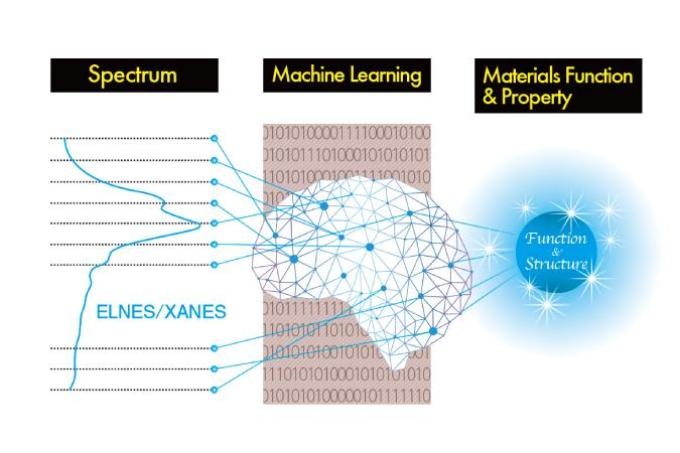Mar 26 2019
At The University of Tokyo, researchers have created a robust machine learning algorithm that can predict the structures and characteristics of unidentified samples from an electron spectrum.
 A novel application of artificial intelligence by The University of Tokyo automatically calculates material properties and structures from spectral scans, providing a powerful tool for the characterization of new compounds. (Image credit: 2019 Teruyasu Mizoguchi, Institute of Industrial Science, The University of Tokyo)
A novel application of artificial intelligence by The University of Tokyo automatically calculates material properties and structures from spectral scans, providing a powerful tool for the characterization of new compounds. (Image credit: 2019 Teruyasu Mizoguchi, Institute of Industrial Science, The University of Tokyo)
Such a process may quickly speed up the process of finding and testing new solar cells, nanomachines, and other associated electronic devices.
In essence, tricorders are imaginary devices that were initially observed on the popular Star Trek television show. In this science fiction environment, researchers can immediately learn about the rocks existing on alien planets with a rapid scan. Now, at The University of Tokyo, scientists have taken a positive step towards making this idea a reality. They determined the atomic elements in it and also their bonding structure by using data from core-loss electron spectroscopy—a set of typical lab tests that transmit electrons to a sample.
Conversely, it is hard to interpret the outcomes from these instruments. Hence, to resolve this issue, the researchers turned to machine learning. Machine learning algorithms, unlike traditional computer programs, do not have to be instructed on what patterns to search for. Rather, the machine learning algorithms are trained by inputting a number of examples, and the program learns how to categorize new and unknown samples over time.
In this analysis, the investigators selected a neural network that imitates the layout of the human brain. Data obtained from known materials are transmitted as input, and the model’s predictions are optimized by adjusting the connections between neurons.
With the increasing demand for nanoscale devices, tools for understanding molecular structures are becoming more and more valuable.
Shin Kiyohara, Study First Author, Institute of Industrial Science, The University of Tokyo.
It is still a long way from a tricorder that can promptly detect the formations of alien rocks, but “this method has enormous potential for use in quickly testing the properties of new materials,” believes lead author Teruyasu Mizoguchi.